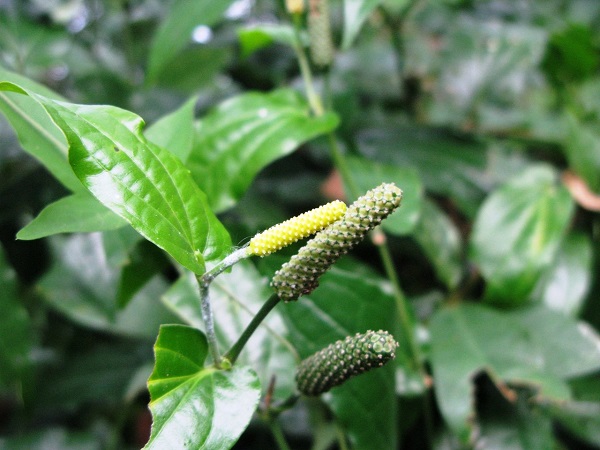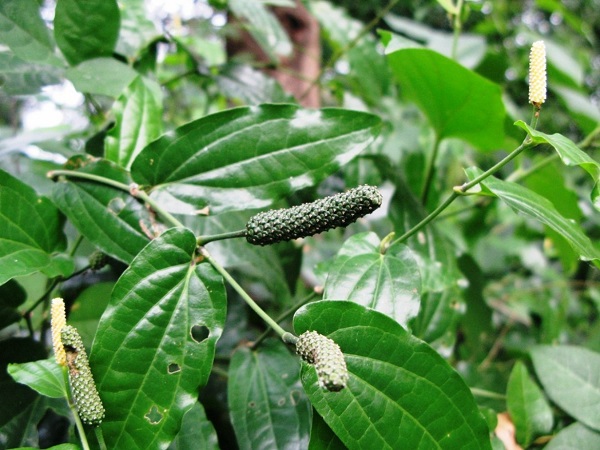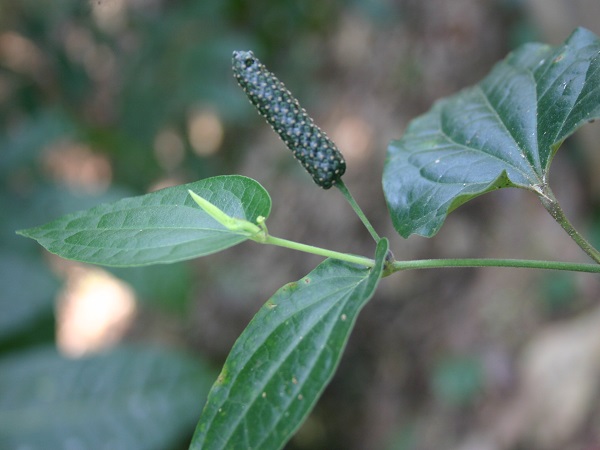
| Family | Piperaceae |
| English Name | Long pepper |
| Malayalam Name | Thippali, Pippali |
| Tamil Name | Thippili |
| Kannada Name | Hippali |
| Telugu Name | Pippallu |
| Hindi Name | Pippali |
| Sanskrit Name | Upakalya, Krishna, Krukara |
| Trade Name | Pipal, Thippili, Pippali |
| Part Used | Spikes and roots |
| In Wild | Yes |
| Under Cultivation | Yes |
| Temperature | 30 – 32 °C temperature, |
| Rainfall | annual rainfall of 150 cm |
| Farmers | NA |
| Traders | NA |
| Institution | NA |
| Individually | NA |
| State/Region | NA |
| District | NA |
| Nursery Information | NA |
| Yield | Average yield of spike is 80 kg/acre in first year and 200 -250 kg/acre (3rd year), Root: 200 kg/acre. |
| Economic of cultivation | Cost of cultivation/Hectare: ₹ 80,000 (as on 2018), Net profit/Hectare: ₹1,50,000 (as on 2018) |
| Quantitative quality standards | Foreign material: Not more than 2 per cent, Total ash: Not more than 5 per cent, Acid insoluble ash: Not more than 0.6 per cent, Ethanol soluble extractive: Not less than 12 per cent, Water soluble extractive: Not less than 11 per cent, Loss on drying: Not more than 13 per cent9 (w/v). |
| Description | NA |
| Agro technology/Cultivation practices | Thippali is a plant of humid tropics. It thrives well in regions having 30 – 32 °C temperature, 60 % humidity with annual rainfall of 150 cm.An elevation of 100-1000 m above mean sea level is ideal. Requires partial shade (20-30%) for best growth. It is an ideal intercrop in middle aged coconut and arecanut plantations. It can be successfully cultivated in well drained forest soils rich in organic matter. Laterite soils with high organic matter content and moisture holding capacity are also suitable for thippali cultivation. Planting-stock production Long pepper is propagated by rooted vine cuttings. The runner vines from female plants shall be used as the planting material. 3-5 nodded cuttings of 15-20 cm long are planted in polybags. The best time for nursery planting is March-April. The rooted cuttings will be ready for transplanting in 2 months time. The planting is distributed from June – July and September – October. Pits of 15 cm depth are formed and the rooted cuttings are planted at the center of pit. Field planting With the onset of monsoon in June, the field is ploughed well; 15 cm - 20 cm raised beds of four feet breadth and convenient length are prepared. On these beds, pits are dug at 60 cm x 30 cm spacing and well decomposed organic manure at 1kg /pit is applied and mixed with the soil. Rooted vine cuttings from polybags are transplanted to these pits. Adequate drainage should be given during rainy season. Manuring The crop needs heavy manuring at the rate of 20 t FYM/ha/annum. Application of cow dung slurry at two months interval followed by earthing up is found to enhance crop growth and spike production. Irrigation Need based irrigation shall be given. With irrigation the crop continues to produce spikes even in off-season. Pests Mealy bug Symptoms: Colonise on roots and stem; infested plants show yellowing & stunted growth. Occurrence is common in summer. Tea mosquito adults and nymphs of Helopeltis sp. feed on foliage Control: Both pests are controlled by sprayings 2.5% Neem kernel suspension. |
| Harversting | The vines start flowering six months after planting and flowers are produced almost throughout the year. The spikes mature in 2 months time. The optimum stage of harvest is when the spikes are blackish green. The pungency is highest at this stage. Spikes are hand picked when they become mature and then dried in sun for 7-10 days. |
| Processing | Dry spikes weigh about 1/5 of fresh produce. The dried spikes have to be stored in moisture proof containers.The yield of dry spike is 80 kg/acre during first year, increases to 200-250 kg during third year and thereafter it decreases.Therefore, after 3 years the whole plant is harvested. The stem is cut close to the ground and roots are dug up. It is cut into pieces of 2.5-5 cm length, dried in shade and marketed as piplamool. |
| References | NA |


